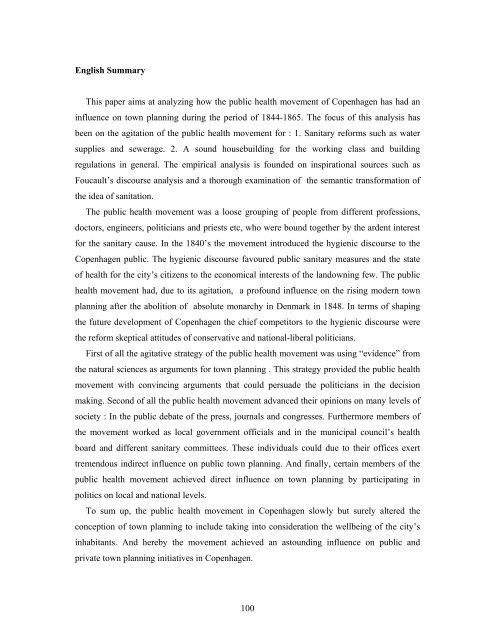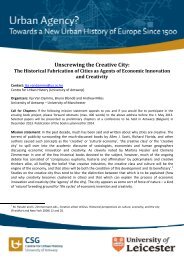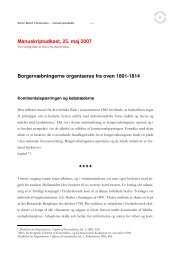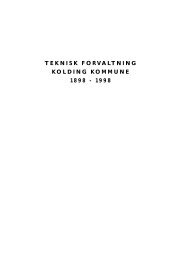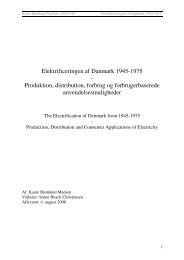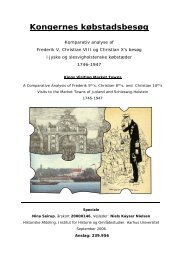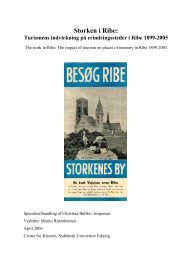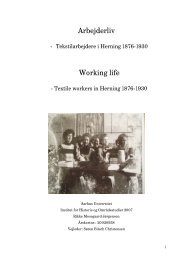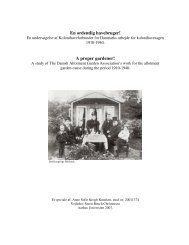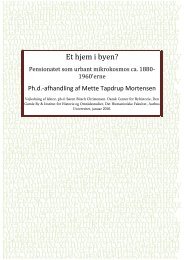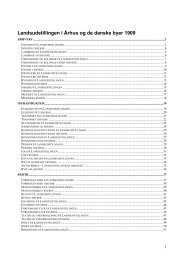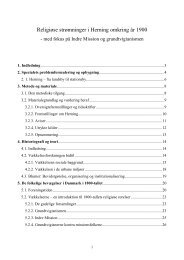BYENS PLAN - Dansk Center for Byhistorie
BYENS PLAN - Dansk Center for Byhistorie
BYENS PLAN - Dansk Center for Byhistorie
You also want an ePaper? Increase the reach of your titles
YUMPU automatically turns print PDFs into web optimized ePapers that Google loves.
English Summary<br />
This paper aims at analyzing how the public health movement of Copenhagen has had an<br />
influence on town planning during the period of 1844-1865. The focus of this analysis has<br />
been on the agitation of the public health movement <strong>for</strong> : 1. Sanitary re<strong>for</strong>ms such as water<br />
supplies and sewerage. 2. A sound housebuilding <strong>for</strong> the working class and building<br />
regulations in general. The empirical analysis is founded on inspirational sources such as<br />
Foucault’s discourse analysis and a thorough examination of the semantic trans<strong>for</strong>mation of<br />
the idea of sanitation.<br />
The public health movement was a loose grouping of people from different professions,<br />
doctors, engineers, politicians and priests etc, who were bound together by the ardent interest<br />
<strong>for</strong> the sanitary cause. In the 1840’s the movement introduced the hygienic discourse to the<br />
Copenhagen public. The hygienic discourse favoured public sanitary measures and the state<br />
of health <strong>for</strong> the city’s citizens to the economical interests of the landowning few. The public<br />
health movement had, due to its agitation, a profound influence on the rising modern town<br />
planning after the abolition of absolute monarchy in Denmark in 1848. In terms of shaping<br />
the future development of Copenhagen the chief competitors to the hygienic discourse were<br />
the re<strong>for</strong>m skeptical attitudes of conservative and national-liberal politicians.<br />
First of all the agitative strategy of the public health movement was using “evidence” from<br />
the natural sciences as arguments <strong>for</strong> town planning . This strategy provided the public health<br />
movement with convincing arguments that could persuade the politicians in the decision<br />
making. Second of all the public health movement advanced their opinions on many levels of<br />
society : In the public debate of the press, journals and congresses. Furthermore members of<br />
the movement worked as local government officials and in the municipal council’s health<br />
board and different sanitary committees. These individuals could due to their offices exert<br />
tremendous indirect influence on public town planning. And finally, certain members of the<br />
public health movement achieved direct influence on town planning by participating in<br />
politics on local and national levels.<br />
To sum up, the public health movement in Copenhagen slowly but surely altered the<br />
conception of town planning to include taking into consideration the wellbeing of the city’s<br />
inhabitants. And hereby the movement achieved an astounding influence on public and<br />
private town planning initiatives in Copenhagen.<br />
100


